Deborah J. Ross's Blog, page 52
April 6, 2020
Guest Jeffrey A. Carver: New Way to Buy Print Books AND Support Local Stores!
 My friend, Jeff Carver, posted this:Stuck at home, and you want to buy a book on paper (hey, it happens!)—and buying online seems the only option but you’d rather support local indie bookstores? There’s a new way to do that, and it doesn’t require an app! It’s called Bookshop, and it’s an online store dedicated to supporting authors, book communities, and bookstores! Whaaat?The way it works is, you order online just like at any of the big stores. The print books are sourced from Ingram, just like at your local store, and you get it in the mail. If you go in through a link like one of the ones I have below, the author or community that created the link gets a referral fee. In addition, a significant portion of the profit from the sale goes into a fund that gets distributed regularly among participating independent bookstores. It’s sort of like Indiebound, if you’ve used that, but even better. Right now, they only ship to the U.S., but they may expand in the future.Authors can set up their own pages at the store, featuring their own books (just print right now, and some audio). They, or anyone else, can also set up pages where they feature books they’d like to recommend to you. Buy one of their books, and they get the regular royalty, plus the referral fee. It’s a great way to support authors and bookstores, all while buying online—particularly useful right now, when the storefront economy has slammed to halt, due to the coronavirus.Here are some links! These folks are my friends and colleagues. They write all kinds of stuff. Try any of them, and you’ll support the author whose link you picked, even if you browse around and buy other books by other authors. I’ll add more as they come in. Folks are just getting ramped up on this.Give it a try! It’s fun!Jeffrey A. Carver | Laura Anne Gilman | Deborah J. RossPati Nagle | Gillian Polack | Madeleine Robins
My friend, Jeff Carver, posted this:Stuck at home, and you want to buy a book on paper (hey, it happens!)—and buying online seems the only option but you’d rather support local indie bookstores? There’s a new way to do that, and it doesn’t require an app! It’s called Bookshop, and it’s an online store dedicated to supporting authors, book communities, and bookstores! Whaaat?The way it works is, you order online just like at any of the big stores. The print books are sourced from Ingram, just like at your local store, and you get it in the mail. If you go in through a link like one of the ones I have below, the author or community that created the link gets a referral fee. In addition, a significant portion of the profit from the sale goes into a fund that gets distributed regularly among participating independent bookstores. It’s sort of like Indiebound, if you’ve used that, but even better. Right now, they only ship to the U.S., but they may expand in the future.Authors can set up their own pages at the store, featuring their own books (just print right now, and some audio). They, or anyone else, can also set up pages where they feature books they’d like to recommend to you. Buy one of their books, and they get the regular royalty, plus the referral fee. It’s a great way to support authors and bookstores, all while buying online—particularly useful right now, when the storefront economy has slammed to halt, due to the coronavirus.Here are some links! These folks are my friends and colleagues. They write all kinds of stuff. Try any of them, and you’ll support the author whose link you picked, even if you browse around and buy other books by other authors. I’ll add more as they come in. Folks are just getting ramped up on this.Give it a try! It’s fun!Jeffrey A. Carver | Laura Anne Gilman | Deborah J. RossPati Nagle | Gillian Polack | Madeleine RobinsDoranna Durgin

Published on April 06, 2020 01:00
April 3, 2020
Short Book Reviews: Ancient Rome, With Magic
Unseen Fire, by Cass Morris (DAW)
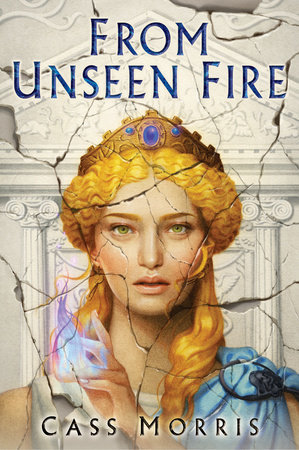
Ancient Rome! With magic! I am not a scholar of ancient history, so I cannot vouch for the historical accuracy of this dramatic tale of politics, warfare, cultural upheaval, and romance set about 67 B.C.E. But the world, its peoples, and their attitudes and choices, in every detail feel so seamlessly consistent I was never jolted out of the story.
Rome – Aven in this book – is in the beginning of its decline but still the dominant power in the known world. At the opening of the story, a brutal dictator, having executed or exiled anyone who spoke out against him, has died. Now it’s up to those remaining leaders to reconstitute a republic. Some are already in Aven, having bowed to the dictator or gone into hiding; others return from exile. One such return is Sempronius, a mage of Shadow and Water elements, a brilliant leader and strategist who must hide his magical powers, for mages are forbidden by law from holding public office. Latona, daughter of an elder Senator, has just been freed from the dictator’s thumb (and bed), and her confidence in herself and her magical powers of Spirit and Fire have not yet recovered. Meanwhile, elections bog down as those who want to restrict power to traditionalist classes vie with those who see Aven’s future in the expansion of suffrage. And on the Iberian peninsula, a fanatical war leader is using blood magic to expel the Avenian invaders.
The book perfectly balances the richly nuanced portrayal of a culture in tumult with characters that change and grow, a fascinating system of magic and its relationship to pantheist religion, lively dialog, unexpected plot twists, and a tender love story. It’s a long read (and only the first part of a longer series) but well worth savoring every page.

Published on April 03, 2020 01:00
April 1, 2020
Today's Moment of Art
Published on April 01, 2020 01:00
March 30, 2020
Guest Blog: Tara Gilboy on Why Adults Should Read Middle Grade Novels
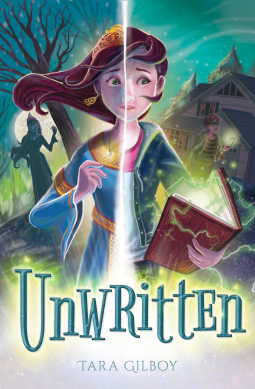 Tara Gilboy is the author of the Middle Grade fantasy novels, Unwritten and Rewritten (see my review next Friday). Stay tuned for her upcoming blog post on writing for Middle Grades.
Tara Gilboy is the author of the Middle Grade fantasy novels, Unwritten and Rewritten (see my review next Friday). Stay tuned for her upcoming blog post on writing for Middle Grades.Why Adults Should Read Middle Grade Novels, by Tara Gilboy
I don’t read adult books.
Most people give me strange looks when I say this. I’m an author, after all. And a grown up. Why wouldn’t I want to read adult books?
I think my friends and family assume it’s a phase. They are always trying to give me books after they’ve finished them. This one will convince you to read adult books again. Nope.
Now don’t get me wrong: there are many adult books I like. I have a few favorites, and from time to time, I will reread them. I love Jane Austen, Stephen King, and Amy Tan. Elizabeth Kostova’s The Historian is a favorite, as is Anthony Doerr’s All the Light We Cannot See. It’s not that I think there is anything wrong with adult books. It’s just that I like middle grade books better.
As I sat down to write this blog post, I realized I’d never really considered closely why I prefer middle grade over adult novels. Whenever anyone asked me, I’d always given the easy answer: “well, it’s because I write them.” (Which seems like the very responsible, professional, “adult” answer.) Or even worse: “ I don’t know. I just like them better.”
But middle grade books are important. For children, yes. But for adults too.
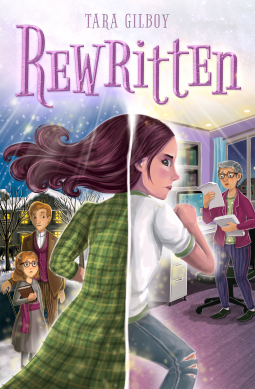 There’s been a lot of crossover in the young adult genre in recent years. Adult readers devour YA books like The Hunger Games, but the same sort of crossover is not seen as often in middle grade. Grown-ups who wouldn’t think twice about purchasing books like Divergent or Children of Blood and Bone are less eager to pick up books like Holes and Ella Enchanted.
There’s been a lot of crossover in the young adult genre in recent years. Adult readers devour YA books like The Hunger Games, but the same sort of crossover is not seen as often in middle grade. Grown-ups who wouldn’t think twice about purchasing books like Divergent or Children of Blood and Bone are less eager to pick up books like Holes and Ella Enchanted.I think there is a myth that because middle grade is shorter and written for younger readers, it must be simple or unsophisticated, but nothing could be further from the truth. Rather than making it simple, middle grade’s brevity simply means it is concise, distilled down to its most essential elements with everything extraneous stripped away. Most middle grade books are short enough to be read in one sitting, allowing you to hold the entire story in your mind in a single afternoon.
Middle grade is unpretentious, but not unsophisticated. This is its charm.
Middle grade is all about storytelling. Writing middle grade forces the author to disappear, to remove his or her ego from the writing. Readers don’t want paragraph after paragraph of all the wonderful historical research you did. They don’t care if you can write fancy poetic sentences that are grammatically correct even at a mile long. They don’t want pages of beautifully written exposition. There is a reason that middle grade books are so beloved, the books that often turn many children into lifelong readers. It’s called the “golden age of reading” for a reason. Middle grade draws on traditional storytelling forms. Heroes and quests. Magic. Evil villains.
They can be highly literary but in a way in which the language does not draw attention to itself.
Middle grade readers are old enough to be able to explore complicated and difficult issues but are still young enough and unjaded enough that they do so in a hopeful way. Middle grade answers universal questions like: “Who am I?” “What is my place in the world?” It explores questions like friendship and where we fit within our family structure. (And if exploring these themes were unique to middle grade readers, a lot fewer people would be in therapy.)
Middle grade is pure story, unobstructed by ego or long asides. The focus is on plot and character.
There are few characters more complex than Cecile in Rita Williams Garcia’s One Crazy Summer, a flawed character and negligent mother, but one whose motivations we understand entirely.
Or Anna, in Sarah, Plain and Tall, who sums up her complicated feelings about her younger brother with the simple words “Mama died the next morning. That was the worst thing about Caleb.”
I often think children have much more sense than adults, who come with so much baggage. They cut right to the heart of the matter.
My favorite thing about middle grade, though, is the point of view. I often grow frustrated with adult books. Adults are often jaded. Pessimistic. Disillusioned. One of the reasons I feel so good after I finish a middle grade novel is because I have spent a significant amount of time in the mind of a child narrator. Middle grade narrators are hopeful. They are curious. They care passionately about things. Their characters are not settled—they are still finding their own identities. They are curious and have an infinite capacity for wonder. To spend an afternoon lost in a middle grade novel is an afternoon spent reconnecting to these qualities within ourselves. These characters are not distracted, like adult narrators, by work, romance, sex, and the dull minutiae of life. There are parts of ourselves we lose as adults – hope, wonder, creativity, playfulness, even the importance of friendship – and middle grade novels present an opportunity for us to reconnect with these parts of our childhood selves and reexamine our own identities.
When we are the age of middle grade readers, anything is possible, the future unknown. We don’t know what profession we will have, who we will marry, or where we will live. That part is still unwritten.
Let us all be open to the adventure.
Middle Grade author Tara Gilboy holds a Master of Fine Arts in Creative Writing from the University of British Columbia, where she specialized in writing for children and young adults. She teaches creative writing in San Diego Community College's Continuing Education Program and for the PEN Writers in Prisons Program.
*You can order signed copies through Mysterious Galaxy: https://www.mystgalaxy.com/book/9781631631771Otherwise, it's also available at Amazon https://www.amazon.com/Unwritten-Tara-Gilboy/dp/1631631772
and Barnes and Noble: https://www.barnesandnoble.com/w/unwritten-tara-gilboy/1128015977

Published on March 30, 2020 01:00
March 28, 2020
Curious Fictions: Jaydium, Chapter 1 (Free)
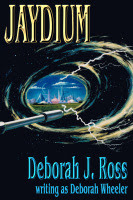 Far in the future, an interplanetary civil conflict has ground to an uneasy halt. Kithri, abandoned on a desolate mining planet, meets Eril, shell-shocked pilot. A freak accident sends them back to a time when their desert world was lush and green, when an alien civilization stands on the brink of a war of total destruction. They must choose to remain outside the conflict or to stand up for what they believe.
Far in the future, an interplanetary civil conflict has ground to an uneasy halt. Kithri, abandoned on a desolate mining planet, meets Eril, shell-shocked pilot. A freak accident sends them back to a time when their desert world was lush and green, when an alien civilization stands on the brink of a war of total destruction. They must choose to remain outside the conflict or to stand up for what they believe.
Read the first chapter free on:
Curious Fictions: Jaydium, Chapter 1

Published on March 28, 2020 11:20
March 27, 2020
Short Book Reviews: The Pirates of Pell
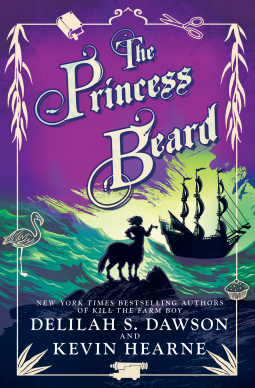 The Princess Beard (The Tales of Pell) by Kevin Hearne and Delilah S. Dawson (Del Rey)
The Princess Beard (The Tales of Pell) by Kevin Hearne and Delilah S. Dawson (Del Rey)This is the third “Tale of Pell” I’ve read, and by far the most entertaining. It is, of course, a pirate story, complete with a beard-sporting princess, a dryad in the process of transforming into a carnivorous tree, a pudgy elf, and a centaur whose secret magical weapon involves pelting his enemies with hot tea and sugary pastries. Oh, and the captain – Filthy Lucre – is a parrot in search of the ideal shoulder perch. For me this novel had more structure and cohesiveness than the earlier two, which often devolved into excuses for puns that had only approximate relationship to the central plot. I found these characters much more sympathetic, I loved how each grew and matured during their adventures, so the entire effect was of greater emotional immediacy and warmth, but no less exciting action. And bad puns. Highly entertaining, and with great heart.

Published on March 27, 2020 01:00
March 25, 2020
Today's Moment of Art
Published on March 25, 2020 01:00
March 24, 2020
Science-based strategies for coronavirus anxiety
These days, so many of us are beset by anxiety. I found this article from The Conversation helpful -- even if I already knew some of these strategies, it's always good to be reminded.7 science-based strategies to cope with coronavirus anxiety

Anxiety is part of life, but should not take over your life.
fizkes/Shutterstock.com
Jelena Kecmanovic, Georgetown University
As the SARS-CoV-2 virus continues its global spread and the number of diagnosed COVID-19 cases continues to increase, anxiety related to the outbreak is on the rise too.
As a psychologist, I am seeing this in my practice already. Although feeling anxiety in response to a threat is a normal human reaction, sustained high anxiety can undermine constructive responses to the crisis. People who already suffer from anxiety and related disorders are especially likely to have a hard time during the coronavirus crisis.
The following suggestions, based on psychological science, can help you deal with coronavirus anxiety.
1. Practice tolerating uncertainty
Intolerance of uncertainty, which has been increasing in the U.S., makes people vulnerable to anxiety. A study during the 2009 H1N1 pandemic showed that people who had a harder time accepting the uncertainty of the situation were more likely to experience elevated anxiety.
The solution is to learn to gradually face uncertainty in daily life by easing back on certainty-seeking behaviors.
Start small: Don’t text your friend immediately the next time you need an answer to a question. Go on a hike without checking the weather beforehand. As you build your tolerance-of-uncertainty muscle, you can work to reduce the number of times a day you consult the internet for updates on the outbreak.

Limit your daily digital intake.
GaudiLab/Shutterstock.com
2. Tackle the anxiety paradox
Anxiety rises proportionally to how much one tries to get rid of it. Or as Carl Jung put it, “What you resist persists.”
Struggling against anxiety can take many forms. People might try to distract themselves by drinking, eating or watching Netflix more than usual. They might repeatedly seek reassurance from friends, family or health experts. Or they might obsessively check news streams, hoping to calm their fears. Although these behaviors can help momentarily, they can make anxiety worse in the long run. Avoiding the experience of anxiety almost always backfires.
Instead, allow your anxious thoughts, feelings and physical sensations to wash over you, accepting anxiety as an integral part of human experience. When waves of coronavirus anxiety show up, notice and describe the experience to yourself or others without judgment. Resist the urge to escape or calm your fears by obsessively reading virus updates. Paradoxically, facing anxiety in the moment will lead to less anxiety over time.
3. Transcend existential anxiety
Health threats trigger the fear that underlies all fears: fear of death. When faced with reminders of one’s own mortality, people might become consumed with health anxiety and hyperfocused on any signs of illness.
Try connecting to your life’s purpose and sources of meaning, be it spirituality, relationships, or pursuit of a cause. Embark on something important that you’ve been putting off for years and take responsibility for how you live your life. Focusing on or discovering the “why” of life can go a long way in helping you deal with unavoidable anxiety.

You are stronger than you think you are.
fizkes/Shutterstock.com
4. Don’t underestimate human resiliency
Many people fear how they will manage if the virus shows up in town, at work or at school. They worry how they would cope with a quarantine, a daycare closure or a lost paycheck. Human minds are good at predicting the worst.
But research shows that people tend to overestimate how badly they’ll be affected by negative events and underestimate how well they’ll cope with and adjust to difficult situations.
Be mindful that you are more resilient than you think. It can help attenuate your anxiety.
5. Don’t get sucked into overestimating the threat
Coronavirus can be dangerous, with an estimated 1.4% to 2.3% death rate. So everyone should be serious about taking all the reasonable precautions against infection.
But people also should realize that humans tend to exaggerate the danger of unfamiliar threats compared to ones they already know, like seasonal flu or car accidents. Constant incendiary media coverage contributes to the sense of danger, which leads to heightened fear and further escalation of perceived danger.
To reduce anxiety, I recommend limiting your exposure to coronavirus news to no more than 30 minutes per day. And remember that we become more anxious when faced with situations that have no clear precedent. Anxiety, in turn, makes everything seem more dire.
6. Strengthen self-care
During these anxiety-provoking times, it’s important to remember the tried-and-true anxiety prevention and reduction strategies. Get adequate sleep, exercise regularly, practice mindfulness, spend time in nature and employ relaxation techniques when stressed.
Prioritizing these behaviors during the coronavirus crisis can go a long way toward increasing your psychological well being and bolstering your immune system.
7. Seek professional help if you need it
People who are vulnerable to anxiety and related disorders might find the coronavirus epidemic particularly overwhelming. Consequently, they might experience anxiety symptoms that interfere with work, maintaining close relationships, socializing or taking care of themselves and others.
If this applies to you, please get professional help from your doctor or a mental health professional. Cognitive behavioral therapy and certain medications can successfully treat anxiety problems.
Although you might feel helpless during this stressful time, following these strategies can help keep anxiety from becoming a problem in its own right and enable you to make it through the epidemic more effectively.
---------------------------------
[Insight, in your inbox each day. You can get it with The Conversation’s email newsletter.]
Jelena Kecmanovic, Adjunct Professor of Psychology, Georgetown University
This article is republished from The Conversation under a Creative Commons license. Read the original article.


Anxiety is part of life, but should not take over your life.
fizkes/Shutterstock.com
Jelena Kecmanovic, Georgetown University
As the SARS-CoV-2 virus continues its global spread and the number of diagnosed COVID-19 cases continues to increase, anxiety related to the outbreak is on the rise too.
As a psychologist, I am seeing this in my practice already. Although feeling anxiety in response to a threat is a normal human reaction, sustained high anxiety can undermine constructive responses to the crisis. People who already suffer from anxiety and related disorders are especially likely to have a hard time during the coronavirus crisis.
The following suggestions, based on psychological science, can help you deal with coronavirus anxiety.
1. Practice tolerating uncertainty
Intolerance of uncertainty, which has been increasing in the U.S., makes people vulnerable to anxiety. A study during the 2009 H1N1 pandemic showed that people who had a harder time accepting the uncertainty of the situation were more likely to experience elevated anxiety.
The solution is to learn to gradually face uncertainty in daily life by easing back on certainty-seeking behaviors.
Start small: Don’t text your friend immediately the next time you need an answer to a question. Go on a hike without checking the weather beforehand. As you build your tolerance-of-uncertainty muscle, you can work to reduce the number of times a day you consult the internet for updates on the outbreak.

Limit your daily digital intake.
GaudiLab/Shutterstock.com
2. Tackle the anxiety paradox
Anxiety rises proportionally to how much one tries to get rid of it. Or as Carl Jung put it, “What you resist persists.”
Struggling against anxiety can take many forms. People might try to distract themselves by drinking, eating or watching Netflix more than usual. They might repeatedly seek reassurance from friends, family or health experts. Or they might obsessively check news streams, hoping to calm their fears. Although these behaviors can help momentarily, they can make anxiety worse in the long run. Avoiding the experience of anxiety almost always backfires.
Instead, allow your anxious thoughts, feelings and physical sensations to wash over you, accepting anxiety as an integral part of human experience. When waves of coronavirus anxiety show up, notice and describe the experience to yourself or others without judgment. Resist the urge to escape or calm your fears by obsessively reading virus updates. Paradoxically, facing anxiety in the moment will lead to less anxiety over time.
3. Transcend existential anxiety
Health threats trigger the fear that underlies all fears: fear of death. When faced with reminders of one’s own mortality, people might become consumed with health anxiety and hyperfocused on any signs of illness.
Try connecting to your life’s purpose and sources of meaning, be it spirituality, relationships, or pursuit of a cause. Embark on something important that you’ve been putting off for years and take responsibility for how you live your life. Focusing on or discovering the “why” of life can go a long way in helping you deal with unavoidable anxiety.

You are stronger than you think you are.
fizkes/Shutterstock.com
4. Don’t underestimate human resiliency
Many people fear how they will manage if the virus shows up in town, at work or at school. They worry how they would cope with a quarantine, a daycare closure or a lost paycheck. Human minds are good at predicting the worst.
But research shows that people tend to overestimate how badly they’ll be affected by negative events and underestimate how well they’ll cope with and adjust to difficult situations.
Be mindful that you are more resilient than you think. It can help attenuate your anxiety.
5. Don’t get sucked into overestimating the threat
Coronavirus can be dangerous, with an estimated 1.4% to 2.3% death rate. So everyone should be serious about taking all the reasonable precautions against infection.
But people also should realize that humans tend to exaggerate the danger of unfamiliar threats compared to ones they already know, like seasonal flu or car accidents. Constant incendiary media coverage contributes to the sense of danger, which leads to heightened fear and further escalation of perceived danger.
To reduce anxiety, I recommend limiting your exposure to coronavirus news to no more than 30 minutes per day. And remember that we become more anxious when faced with situations that have no clear precedent. Anxiety, in turn, makes everything seem more dire.
6. Strengthen self-care
During these anxiety-provoking times, it’s important to remember the tried-and-true anxiety prevention and reduction strategies. Get adequate sleep, exercise regularly, practice mindfulness, spend time in nature and employ relaxation techniques when stressed.
Prioritizing these behaviors during the coronavirus crisis can go a long way toward increasing your psychological well being and bolstering your immune system.
7. Seek professional help if you need it
People who are vulnerable to anxiety and related disorders might find the coronavirus epidemic particularly overwhelming. Consequently, they might experience anxiety symptoms that interfere with work, maintaining close relationships, socializing or taking care of themselves and others.
If this applies to you, please get professional help from your doctor or a mental health professional. Cognitive behavioral therapy and certain medications can successfully treat anxiety problems.
Although you might feel helpless during this stressful time, following these strategies can help keep anxiety from becoming a problem in its own right and enable you to make it through the epidemic more effectively.
---------------------------------
[Insight, in your inbox each day. You can get it with The Conversation’s email newsletter.]

Jelena Kecmanovic, Adjunct Professor of Psychology, Georgetown University
This article is republished from The Conversation under a Creative Commons license. Read the original article.

Published on March 24, 2020 01:00
March 20, 2020
Short Book Reviews: Margaret St. Clair's Short Fiction
The Hole in the Moon and Other Tales, by Margaret St. Clair (Dover)
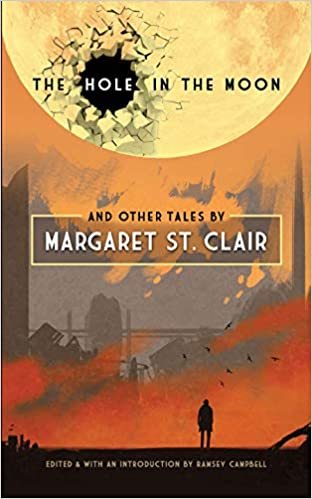
I was introduced to the work of Margaret St. Clair decades ago through her novels, The Dolphins of Altair and The Dancers of Noyo. I still have those old Ace editions. Now Dover has gathered together her short fiction, which belongs on every SF collector’s shelf. The stories show the scope (and weirdness) of her imagination. Her stories are often uneasy, dark and Twilight-Zone-ish, but always fiercely intelligent. She trusts her readers to perceive what is going on without explaining or spoon-feeding.
In researching her biography, I learned a couple of fascinating things about St. Clair – that she was a lifelong supporter of American Friends Service Committee, and that she lived at Friends House in Santa Rosa in the last years of her life. So it did not surprise me to learn she was indeed a birthright Friend (Quaker), although she became interested in Wicca later in life after researching a novel. She wrote:
“Those who have lived through the Holocaust, Hiroshima, Coventry, Dresden, may be excused for forgetting that love, kindness, compassion, nobility, exist. Yet in man’s animal nature lie not only the roots of his cruelty, viciousness, sadism, but also of his perfectly real goodness and nobility. The potential is always there.”-- Quoted in Monster, She Wrote: The Women Who Pioneered Horror and Speculative Fiction, by Lisa Kröger and Melanie R. Anderson

Published on March 20, 2020 01:00
March 19, 2020
#StayHomeAndRead EBook Sale!
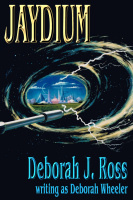 #StayHomeAndRead! I've temporarily reduced the prices of my ebook editions on Amazon. A Heat Wave in the Hellers and Other Doorways (omnibus of Jaydium and Northlight) are 2.99, everything else is 0.99. Enjoy!
#StayHomeAndRead! I've temporarily reduced the prices of my ebook editions on Amazon. A Heat Wave in the Hellers and Other Doorways (omnibus of Jaydium and Northlight) are 2.99, everything else is 0.99. Enjoy!
Published on March 19, 2020 12:27







